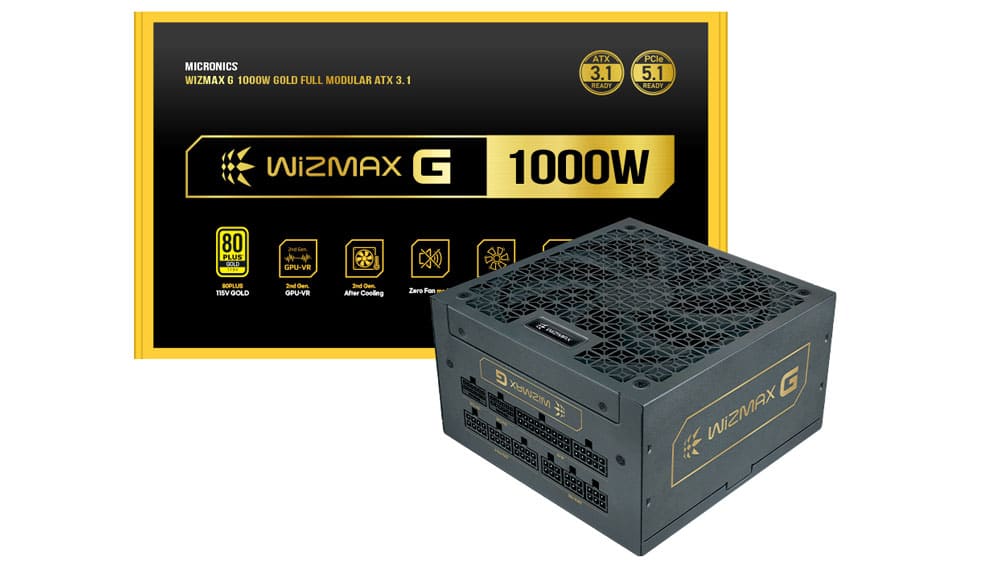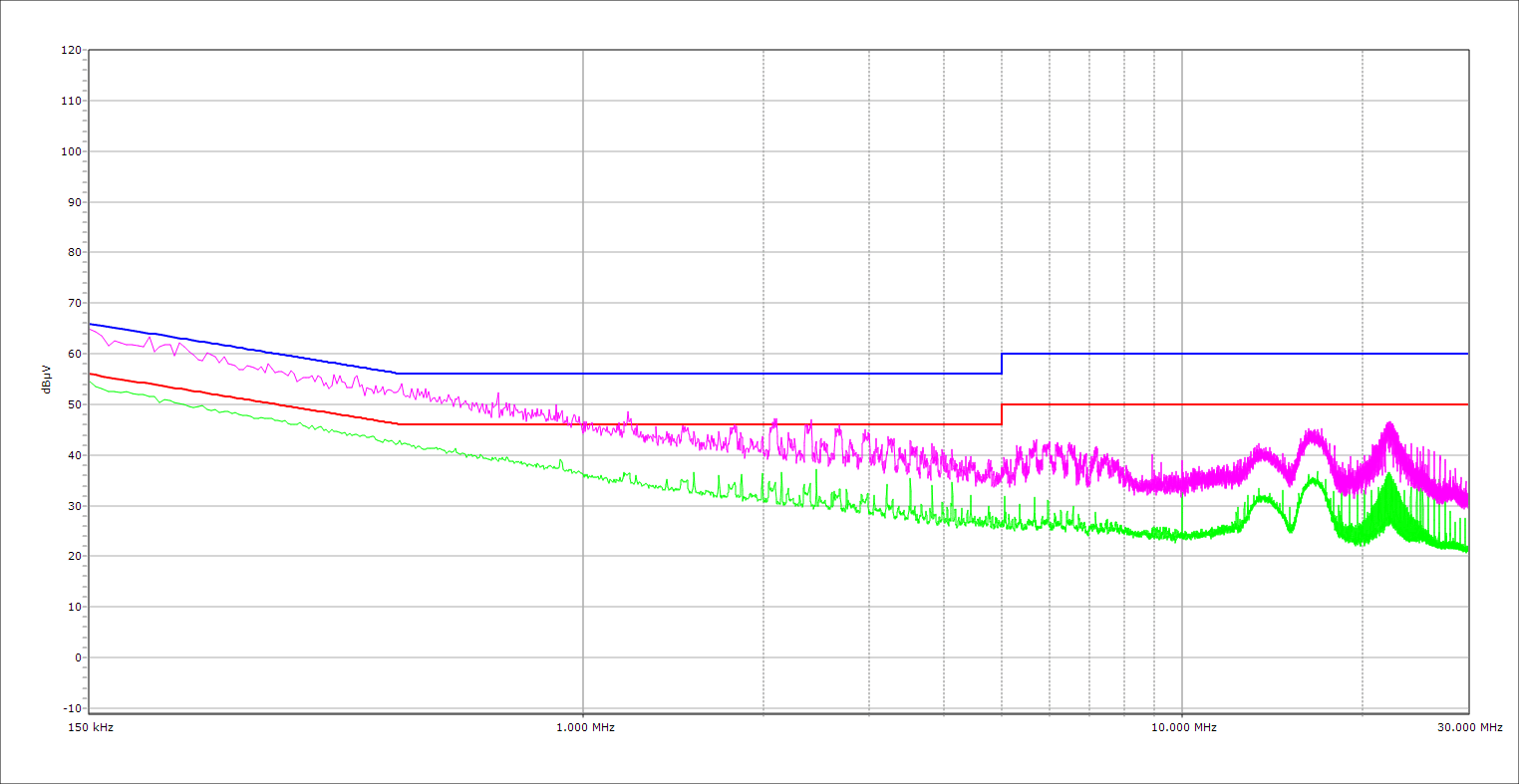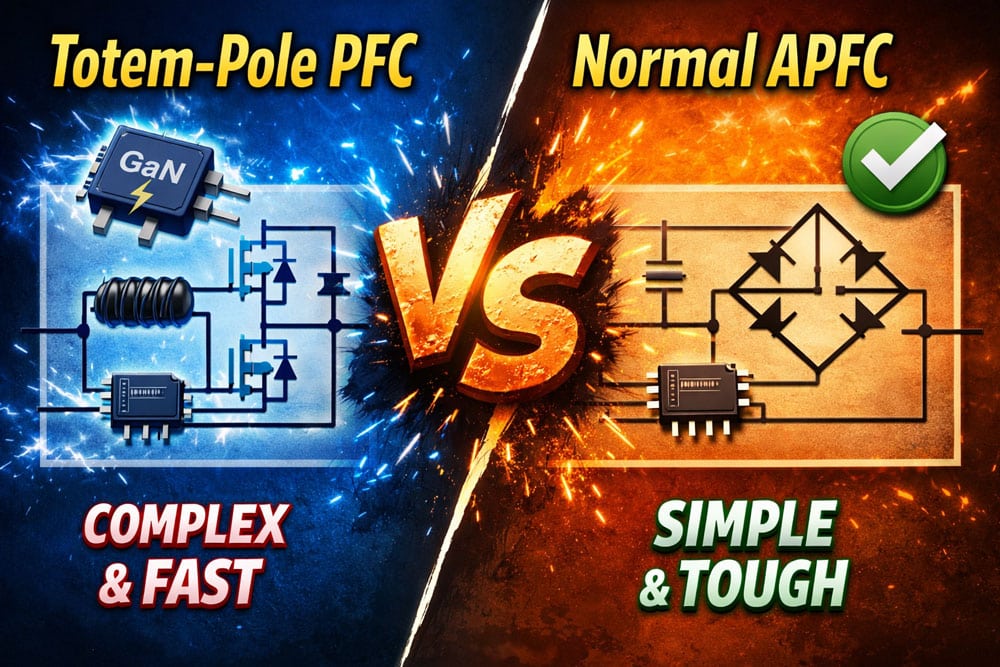Protection Features
Desktop power supply units (PSUs) include several protection features to safeguard both the PSU itself and the connected PC components (motherboard, CPU, GPU, drives, etc.). These protections prevent damage from electrical faults, overloads, or abnormal conditions.
| OCP (Normal @ 27.3°C) | 12V: 117.60A (141.18%), 11.992V 5V: 32.1A (128.40%), 4.994V 3.3V: 34A (136.00%), 3.33V 5VSB: 5.5A (183.33%), 4.979V |
| OCP (Hot @ 43.7°C) | 12V: 116.20A (139.50%), 11.997V 5V: 31.7A (126.80%), 4.996V 3.3V: 33.7A (134.80%), 3.337V 5VSB: 5.5A (183.33%), 4.977V |
| OPP (Normal @ 27.7°C) | 1392.46W (139.25%) |
| OPP (Hot @ 44.2°C) | 1340.44W (134.04%) |
| OTP | ✓ (80°C @ Heat Sink) |
| SCP | 12V to Earth: ✓ 5V to Earth: ✓ 3.3V to Earth: ✓ 5VSB to Earth: ✓ -12V to Earth: ✓ |
| PWR_OK | Proper Operation |
| UVP (Full Load @ 90V) | ✓ |
| UVP (No Damage @ 80V) | ✓ |
| Conducted Emissions EN55032 & CISPR 32 | ✓ |
| NLO | ✓ |
| Fan Failure Protection | ✗ |
| SIP | Surge: MOV Inrush: NTC & Bypass Relay |
The OCP triggering points are high at 12V under normal and hot conditions, and on top of that, the difference between them is low. The 5V rail’s OCP triggering points stay below 130% but because of the high nominal values, it reaches 32A under normal and hot conditions. The 3.3V rail is also allowed for even higher amperage, which is not correct since no modern system requires so much power from ths rail. Lastly, the minor rails have closely set OCP triggering points under normal and hot conditions, which is not ideal.
The over power triggering points are pretty high, but at least the difference is high enough between normal and hot conditions. The rest of the essential protection features are present and work well, except for fan failure protection, which is absent. Manufacturers have to quickly realize that fan failure protection is crucial and start implementing it in their designs.
EMC Pre-Compliance at a Glance
Every electronic device, including PSUs, can be an EMI source, which, depending on the amount of EMI emitted, can affect the proper operation of nearby devices. EMI can, in some extreme cases, even render them unusable. Some standards have been established to minimize electromagnetic interference (EMI) noise. The corresponding standards for IT (Information Technology) products are CISPR 32 and its derivative, EN 55032, which applies to products sold in the EU. In the EU, every product bearing the “CE” marking must comply with the EN 55032 standard. CISPR 32 and EN 55032 standards categorize devices into two classes: A and B. Class B equipment is intended for domestic environments. Hence, its permitted EMI emissions are significantly lower than those of A-class devices.
Our equipment for EMI readings:
- Rohde & Schwarz FPC1500 (loaded with all options)
- Tekbox TBLC08 LISN
- Tekbox TBFL1 transient limiter
- Tekbox EMCview software
| CISPR 32 / EN55032 Limits | ||
| CISRP 32 / EN 55032 Class A Conducted EMI Limit | ||
| Frequency of Emission (MHz) | Conducted Limit (dBuV) | |
| Quasi-peak | Average | |
| 0.15 – 0.50 | 79 | 66 |
| 0.50 – 30.0 | 73 | 60 |
| CISPR 32 / EN 55032 Class B Conducted EMI Limit | ||
| Frequency of Emission (MHz) | Conducted Limit (dBuV) | |
| Quasi-peak | Average | |
| 0.15 – 0.50 | 66 – 56 | 56 – 46 |
| 0.50 – 5.00 | 56 | 46 |
| 5.00 – 30.00 | 60 | 50 |
| CISRP 32 / EN 55032 Class A 10-Meter Radiated EMI Limit | ||
| Frequency of Emission (MHz) | Field Strength Limit (dBuV/m) | |
| 30 – 88 | 39 | |
| 88 – 216 | 43.5 | |
| 216 – 960 | 46.5 | |
| > 960 | 49.5 | |
| CISRP 32 / EN 55032 Class B 3-Meter Radiated EMI Limit | ||
| Frequency of Emission (MHz) | Field Strength Limit (dBuV/m) | |
| 30 – 88 | 40 | |
| 88 – 216 | 43.5 | |
| 216 – 960 | 46.0 | |
| > 960 | 54.0 | |
Please note that the ATX spec allows a 4 dB margin for conducted and radiated emissions. This means that if a PSU exceeds the limits but stays within the 4 dB margin, it meets the corresponding ATX spec requirement (8.1 Emissions).
EMI Results
The PSU’s EMI emissions are under control.




i was able to get this thermalright TR KG850 on sale for $36, i was wondering how bad it would be if i used a 300W GPU (9070 XT hellhound OC) since the cables are only 18AWG.
PS: and I’d like to humbly request that someone could test this PSU as I havent found anyone. it came out in 2025, and has a 5 year warranty.
even more interestingly a better PSU, TR-AG850 has a 10 year warranty which may be a competitor at the high end of PSUs.
Unfortunately, I cannot get my hands on TR PSUs. With the first chance, sure I will test them!
thanks! I’ve just emailed Thermalright recommending them to contact you, not sure if that’s how it’s supposed to work but hopefully they follow up.
Thx aris for a review, btw do you have any Cybenetics updates for XPG Pymcore series can’t wait to see the internals ?
No yet, sorry.